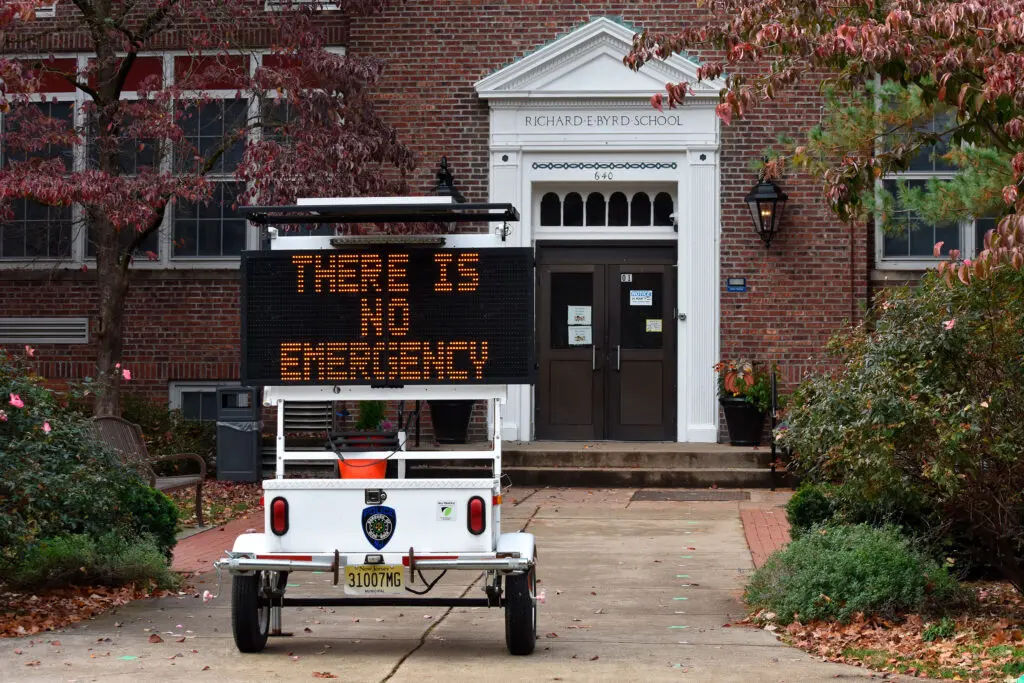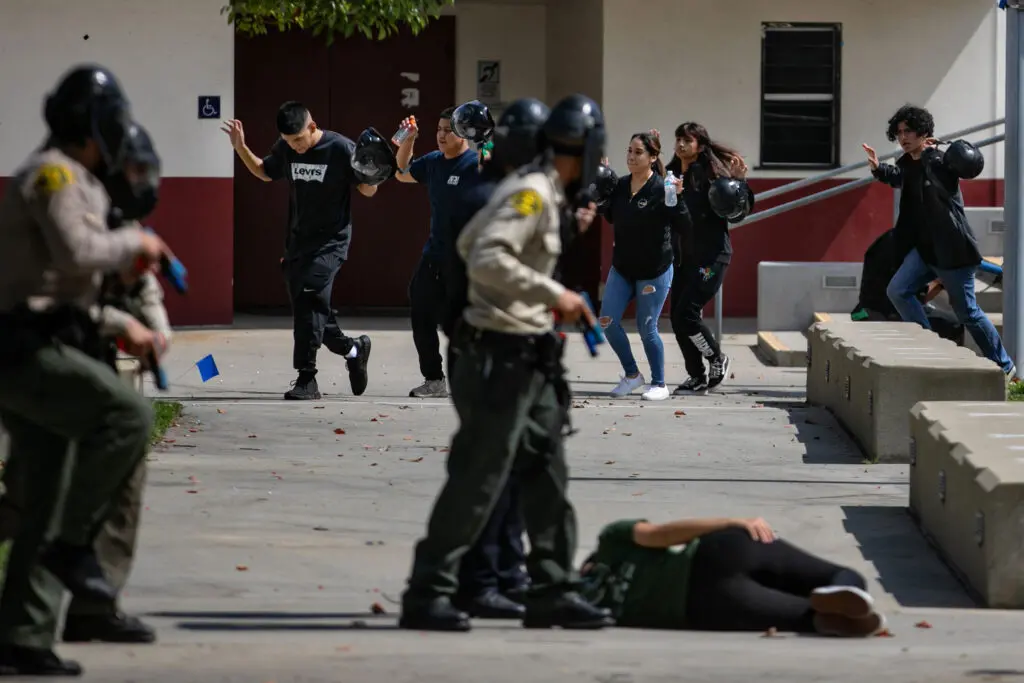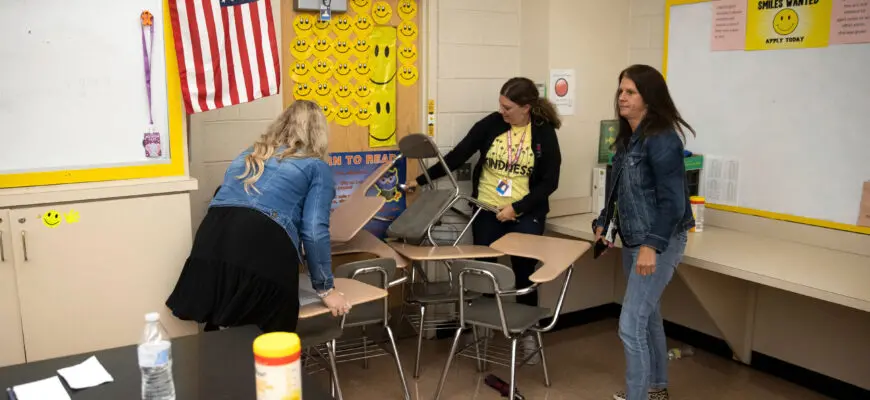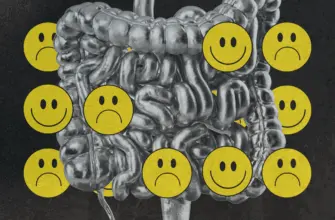Active shooter drills are widely recognized as necessary for school safety, but a critical incident in Snowflake, Arizona, highlighted the severe trauma and panic that can result when these exercises are conducted without warning or proper protocol. As school shootings continue, districts nationwide are struggling to balance preparedness with the mental health of students.
In October 2024, the Snowflake-Taylor police department in Arizona conducted an active shooter drill at Snowflake High School. Police Chief Bobby Martin noted that students failed to take the drill seriously, wandering the campus, laughing, and ignoring safety procedures like locking doors.
To ensure compliance, the police department held a surprise drill at the start of the following year. However, when the PA system announced an active shooter on campus—and specified that this was not a drill—students panicked. Martin reported that a recording made by a former principal increased the confusion, leading to greater panic than anticipated. One student texted her mother, saying there was an active shooter and that she loved her, adding, “we might die.”
“That was not how we were intending it to go by any means,” Martin says. He added that while the reaction suggested they should stop conducting drills, “that’s not a solution, because if anything happens, you need to be prepared.”
This dilemma is pervasive across the country. According to the K-12 School Shooting Database, there have been 208 school shootings so far in 2025, following 336 in all of 2024. Consequently, more than 95% of public schools now perform annual lockdown drills.
But, as Snowflake learned, drills conducted improperly can be deeply traumatic. A 2020 study analyzed social media conversations (over Twitter/X and Reddit) before and after active shooter drills. It found that the drills were associated with an increase in depression, stress, and anxiety among children and their parents, and concerns about death increased by 22%. The study noted that words like “blood” and “pain” appeared more consistently in social media posts for 90 days following a drill.
Most experts agree that preparation for active shooter events is beneficial, making the total elimination of drills unfeasible. Schools face the difficult balancing act of protecting students without causing trauma.
Lawmakers have taken notice. In September, Democratic Congresswoman Marie Gluesenkamp Perez of Washington announced a Congressional amendment that would prohibit taxpayer dollars from being appropriated to schools that do not allow students to opt out of active shooter drills. She wrote: “There is broad consensus affirming what parents already know—mandatory active school shooter drills are deeply traumatizing for children and have no evidence of decreasing fatalities.”
Separately, a 2021 bill introduced by Colorado Democratic Congressman Ed Perlmutter ordered the National Academies of Science, Engineering, and Medicine, to study best practices for maximizing drill effectiveness and assessing their mental health effects. That bill passed, and the resulting National Academies report was released in August 2025.
An emerging body of research highlights best practices for preparing students, though many schools nationwide are failing to follow them.
Focusing on Effective and Non-Traumatic Drills
Drills are effective, but there is a crucial difference between lockdown drills and active shooter drills, according to Jaclyn Schildkraut, the executive director of the Regional Gun Violence Research Consortium at the Rockefeller Institute of Government. She notes that lockdown drills are generally more effective and less traumatic.
Lockdown drills teach specific, repeatable actions: lock the classroom door, turn off the lights, be quiet, and move away from the line of sight. Schildkraut emphasizes the life-saving potential of a locked door, pointing out that only four instances exist where someone was killed behind a locked door in a school shooting, and in one case, the lock failed. “The number one lifesaving device in an active shooter event is the door lock,” she says.
Practicing these simple steps builds muscle memory, which is essential because “situations like active shooter events are incredibly stressful,” she says. “But your body will do what you have trained it to do.”
Lockdown drills involve a specific set of procedures, whereas an “active shooter drill” can be vague and may involve simulated scenarios, which research suggests are more traumatic than valuable. Schildkraut states: “We don’t set a school on fire for a fire drill, we don’t need to simulate an active shooter to practice a lockdown.”
The August 2025 National Academies report recommended that states prohibit the use of drills that simulate an active shooter within the school, as well as sensorial drills. These exercises often use fake bullets or the sound of gunshots. The report concluded that these are practices that “professional consensus largely agrees should not be implemented due to the high potential to cause harm.”
Dr. David Schoenfeld, director of the National Center for School Crisis and Bereavement and a contributor to the report, explains that simulating a crisis event makes it feel like real life, which makes it “more distressing.”
Schools must also avoid being too vague about the purpose of a drill (such as claiming it’s preparation for a moose or bear entering the hallway), as this diminishes the seriousness of the exercise. Schoenfeld suggests teachers could instead say they are locking the door in case someone wants to start a fight. Crucially, schools must never pretend a drill is a real emergency, as happened in Snowflake.

Avoiding Harmful Practices and Ensuring Debriefing
Another practice that can be counterproductive is the options-based drill, which requires teachers and other untrained staff to decide how to respond in the moment. Examples include the “run, hide, fight” response or ALICE training (Alert, Lockdown, Inform, Counter, and Evacuate).
“The options-based drills really come closer to recreating the situation,” says Schoenfeld. “But they have not been shown to lead to better actions on the part of participants, and there’s some limited research that has kind of suggested it may actually work counter to what you’re trying to achieve.”
Best practices dictate that schools should inform parents and students in advance that a lockdown drill will occur, notify participants that they are only practicing during the drill, and require teachers to model calm behavior. Following the drill, there must be time for students and teachers to discuss what happened, according to Aurora Vasquez, senior vice president of state policy for Sandy Hook Promise.
“Students have given examples of being in a quiz when an active shooter drill happened and then going back to the quiz right after,” she says. “They said that’s not super helpful for them, as they want to debrief.”
Finally, students should be allowed to opt out of any drills, especially if they have experienced previous trauma or violence. Schoenfeld summarizes: “Research has shown that if a drill is conducted as a lockdown drill without options based approaches, without simulations, without high intensity, that for the vast majority of kids, it does not need to cause a great deal of distress.”
State Responses and the Call for Prevention
Several states are implementing research-based changes. In 2024, New York state banned realistic school lockdown drills, prohibiting the use of props, actors, or simulations. That same year, California banned the use of simulated fire in active shooter drills and mandated that parents be informed of upcoming drills.
However, other states are moving in the opposite direction. A new law in Missouri, for example, requires students to participate in active shooter exercises in the 2026-2027 school year, and staff may participate in simulated active shooter drills. A recent video surfaced showing a trainer firing blanks in front of lockers during staff training at a Missouri school, demonstrating the jarring nature of these simulations.
These discrepancies fueled Rep. Gluesenkamp Perez’s amendment, which would withhold certain federal funds from schools that do not allow students to opt out of active shooter drills (the amendment would not affect lockdown or fire drills).
Gluesenkamp Perez explained her motivation: “If I have to sign a permission slip for a child to be involved in a ropes course, there feels like there’s a cognitive dissonance if I’m not able to opt out of an active shooter drill.” She introduced the amendment after her three-year-old participated in a daycare drill and subsequently started talking about shooting “bad guys” for the first time. The bill passed through the House Appropriations Committee on September 9 and awaits a vote by the full House.

Others argue that the controversy over drills should prompt a shift in focus toward preventing gun violence entirely. Sonali Rajan, senior research director at Everytown for Gun Safety, says that the discourse has focused too long on response during a violent act, rather than on prevention.
Everytown advocates for prioritizing prevention measures that would ultimately render active shooter drills obsolete. These measures include:
- Behavioral threat assessment: Training staff and students to intervene at the earliest warning signs of potential violence and diverting those individuals to treatment.
- Increasing access to mental health professionals and social support.
- Implementing common-sense gun safety laws, such as secure firearms storage.
“The burdens we are putting on our schools and our kids to prepare for the potential of this kind of violence is, frankly, unacceptable,” Rajan says, calling for elected officials to use known tools to stop the violence before it starts.
However, as school shootings persist, many districts are legally bound to conduct drills. Arizona, for instance, mandates four drills per year. Police Chief Martin confirms that Snowflake has since changed its policies significantly, now providing students with phone alerts and advance notification of drills. Despite the difficulties, Martin maintains that “to not do the drill is not beneficial to anybody.”









